It’s a busy time of year on the farm as spring field work has begun and calving is almost through. But the most significant change this spring came on the other side of the farm gate. George Beddison, at 91 years of age, left St Winnow to move in with family elsewhere in Cornwall. It brings to an end a 73 year stay at St Winnow.
George was born a Londoner in the thirties, a very different city from what it is today. At times, George spoke of the coal-fire smog that enveloped the streets during his childhood. He would leave London during the evacuations of World War II. At that time, Children were relocated from urban areas, which were susceptible to aerial assault by the German Luftwaffe, to rural parts of the country.
Finding his feet on the farm
As an evacuee, George was relocated to Cornwall. He spent the last few years of his childhood living on farms and learning how to repair his own shoes at school. The wartime curriculum couldn’t be more different from what it is today. Once he was old enough to work, George would have stints on two other nearby farms. Burn Farm was the first, just a mile away from St Winnow. After Burn, George lived and worked at neighbouring Cutbrawn. He also worked at Ethy Barton, which is still a significant farm to this day.
All this was at a time when working with horses was the norm. George was at Ethy Barton when they purchased their very first tractor, a Standard Fordson. Tractors where extremely novel at that time. George would tell one story that illustrates how big a change it was. Horses were given vocal commands in the field and at the end of the field, the horseman would say ‘whoa’ to stop the horses. A young George, new to working with tractors, found that the Fordson wouldn’t respond to ‘whoa’ whilst ploughing. He promptly nestled the tractor in the hedge.
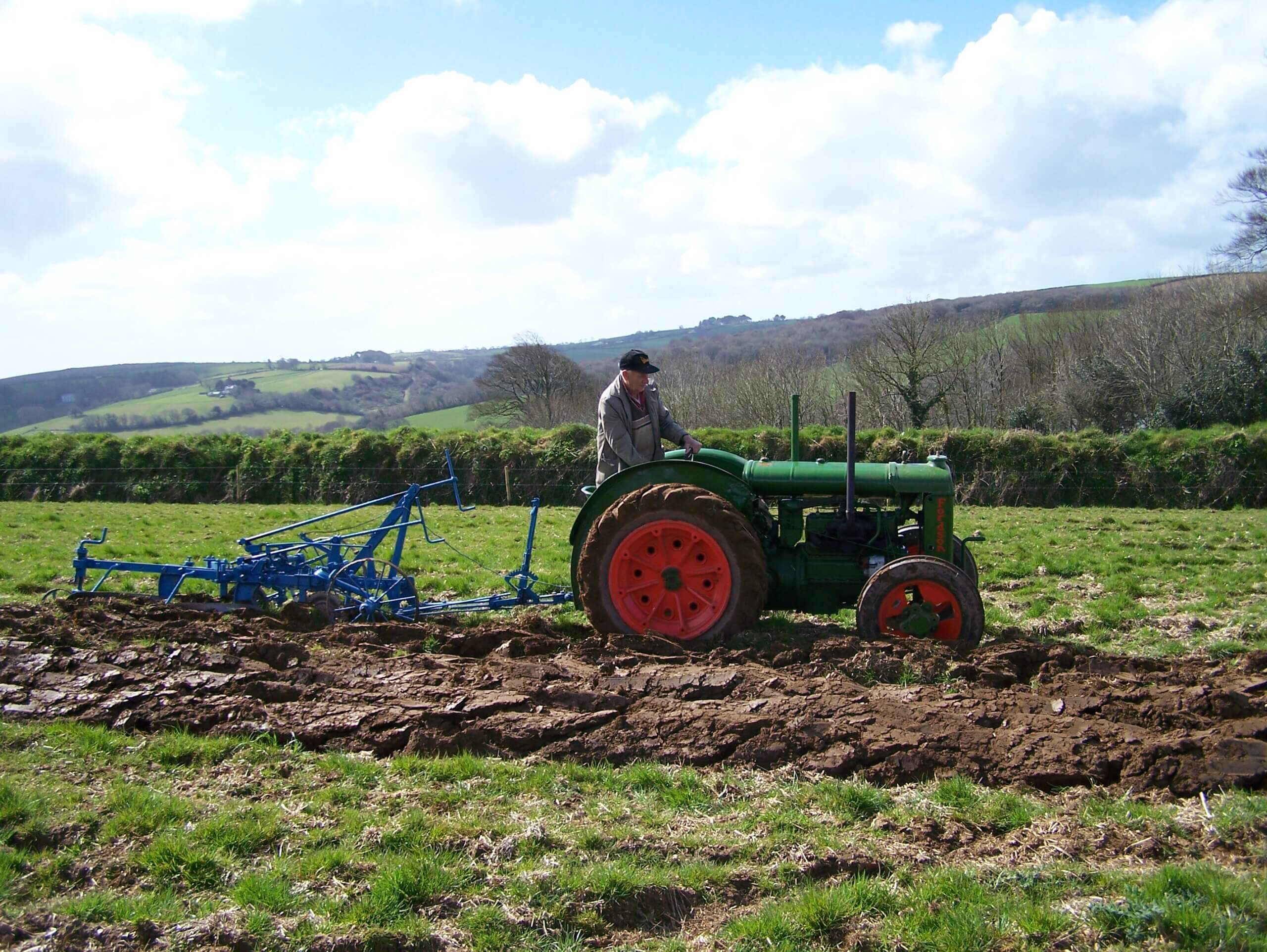
George ploughing with a Standard Fordson N, the same model of tractor he would have used in his early working years.
Coming to St Winnow
Cutbrawn was always a small farm and it could no longer afford to employ George. As George tells it, he was sat on the wall by what is now the Co-op in Lostwithiel, when Henry Stephens (my grandfather) spoke to him when passing by. George was looking for work and it just so happened the farm at St Winnow Barton was looking for new recruits.
Henry told George he would speak to his father, James Stephens. They were already in discussions with one or two other potential candidates. He told George not to accept any other work in the meantime. A short time later, George moved to St Winnow to live and work there for decades to come.
George speaks very fondly of my grandfather, always referring to him as ‘Boss’, never Henry, out of respect. My great-grandfather James would be referred to as ‘Old Boss’ and clearly wasn’t as easy to work with.
Working with horsepower
There was a tractor at St Winnow at the time, but George would still work with horses. It was when walking the horses out to the field that George would find out how persnickety Old Boss could be. He would wait for George at the farm gate in the morning. As George came by, James would stop the horses and adjust one or two of the leather straps on the horses, whether it needed doing or not. By this time, James was retiring from the farm and George tolerated his ways as he was working for Henry by then.
Once the farm moved on from horses, George would get more than his fair share of tractor driving. The farm always had David Brown tractors and George would spend many working days working with the 50TD crawler and later the Implematic 880.
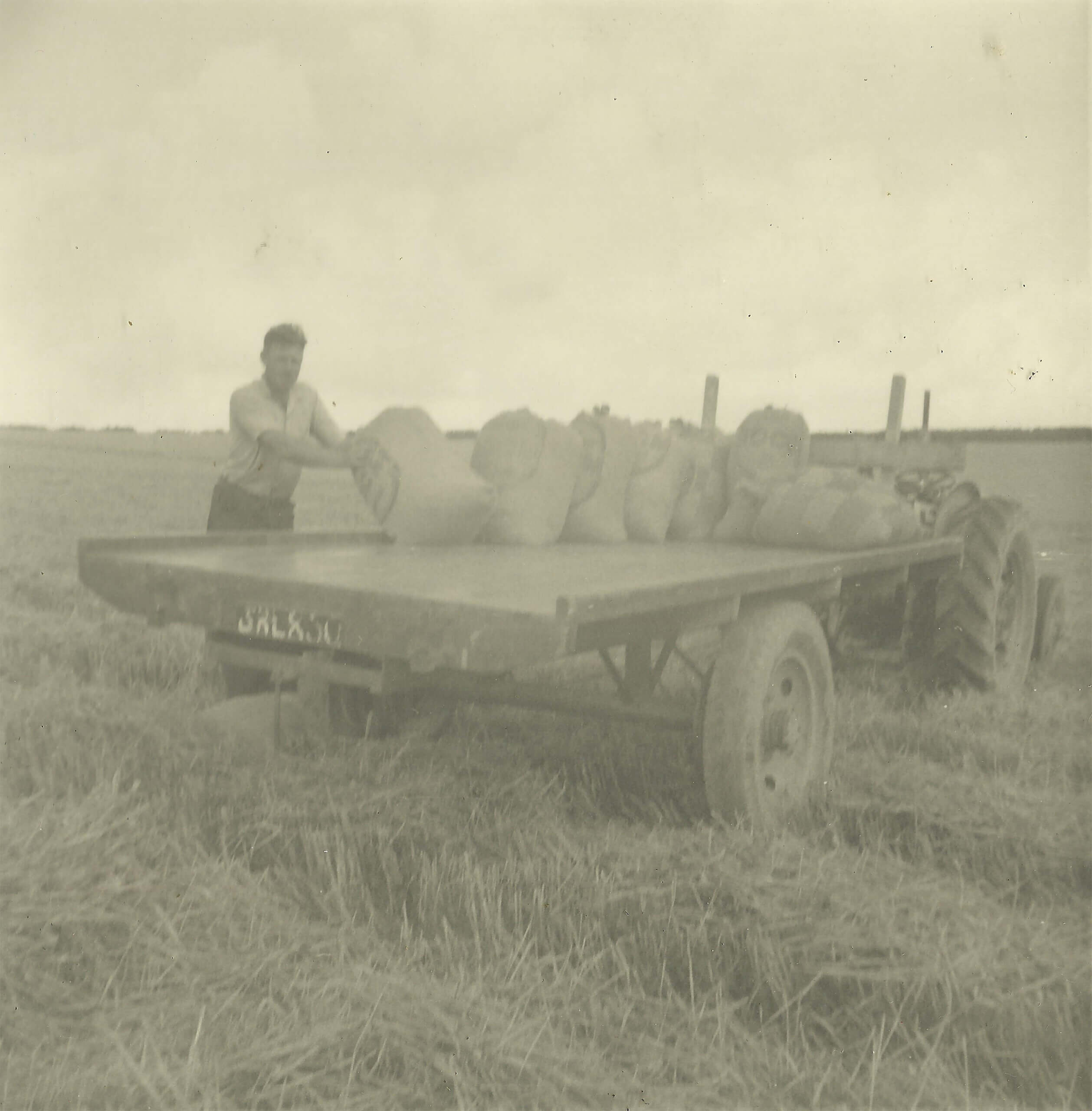
George loading corn sacks in Home Banks during harvest 1962.
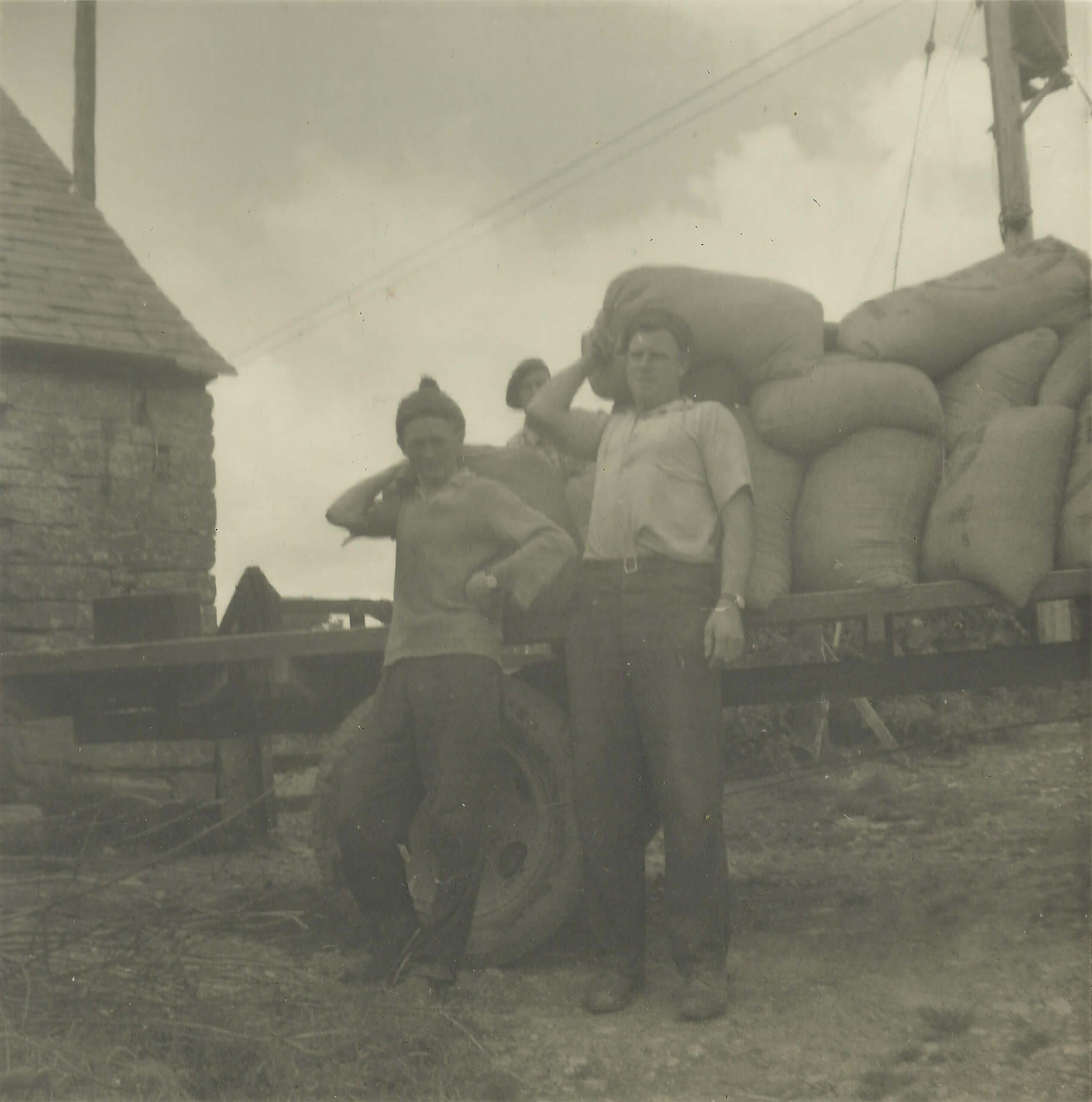
George (right) unloading the corn during harvest 1962.
By the turn of the Sixties, George was married to his wife Joan and had a young family. He moved into the second cottage at St Winnow which remained his home until 2021. He was still very much in touch with his family in Elephant and Castle. When his first daughter was just a baby, he would take his family on the long trip to London by motorbike and sidecar.
Later years and retirement
During the Eighties, Henry passed the farm business over to his two sons Frank (my uncle) and John (my father) who would later split the St Winnow Barton into two separate farms. George would continue to work for both brothers for a short time, before retiring. George would work on the farms infrequently only when the farm was short of hands. He would also work a few silage seasons for my grandfather on my mother’s side, Alfred Tonkin, at Crewell Farm, Lostwithiel.
A family man, George and Joan would host weekly Sunday roasts for all the family. His daughter Susan and grandchildren Sean and Claire, and later Claire’s children, George’s great-grandchildren, were in regular attendance.
In latter part of the Noughties, he would sadly lose his wife Joan after a long illness. He was around eighty years of age at the time and was providing round-the-clock care for Joan, who was housebound for some time.
Back to the land
Providing such attentive care had been hard on George and he was noticeably drained by Joan’s passing. After enough time had passed he asked John, my father, if he would be able to come and help with the morning jobs on the farm.
Dad was happy to have him, then in his eighties, donning his wellies once more. He’d also join Dad at vintage rallies and working days. For a period, we exhibited our David Brown 50TD and George was eager to get back on the tractor he’d driven so much back in his prime working years.
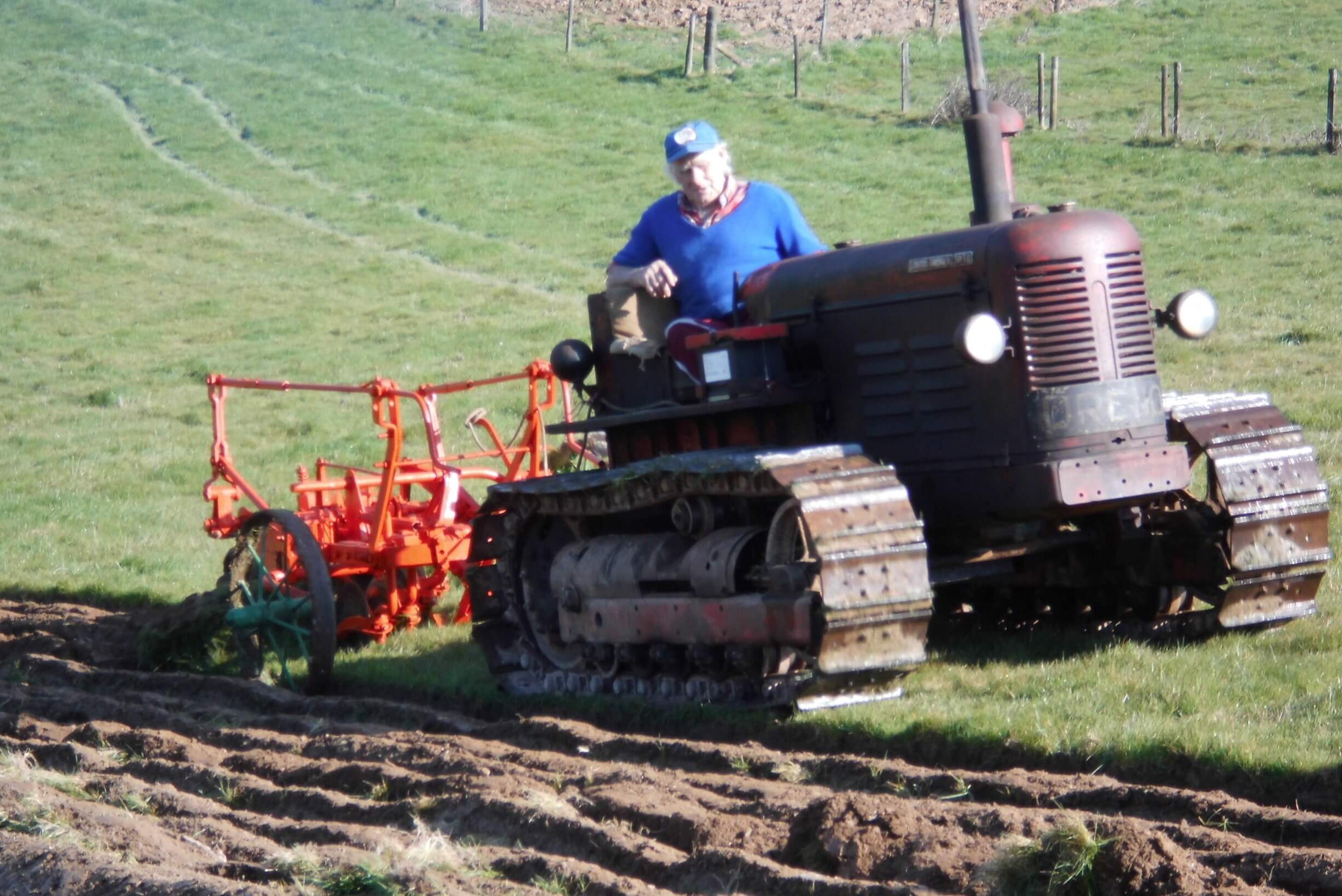
George ploughing with his favourite tractor, the David Brown 50TD.
He would also get a chance to work with the David Brown 880 again. It was used on the hay turner in the summer of 2015. It also happened to be an all-David-Brown hay-making.
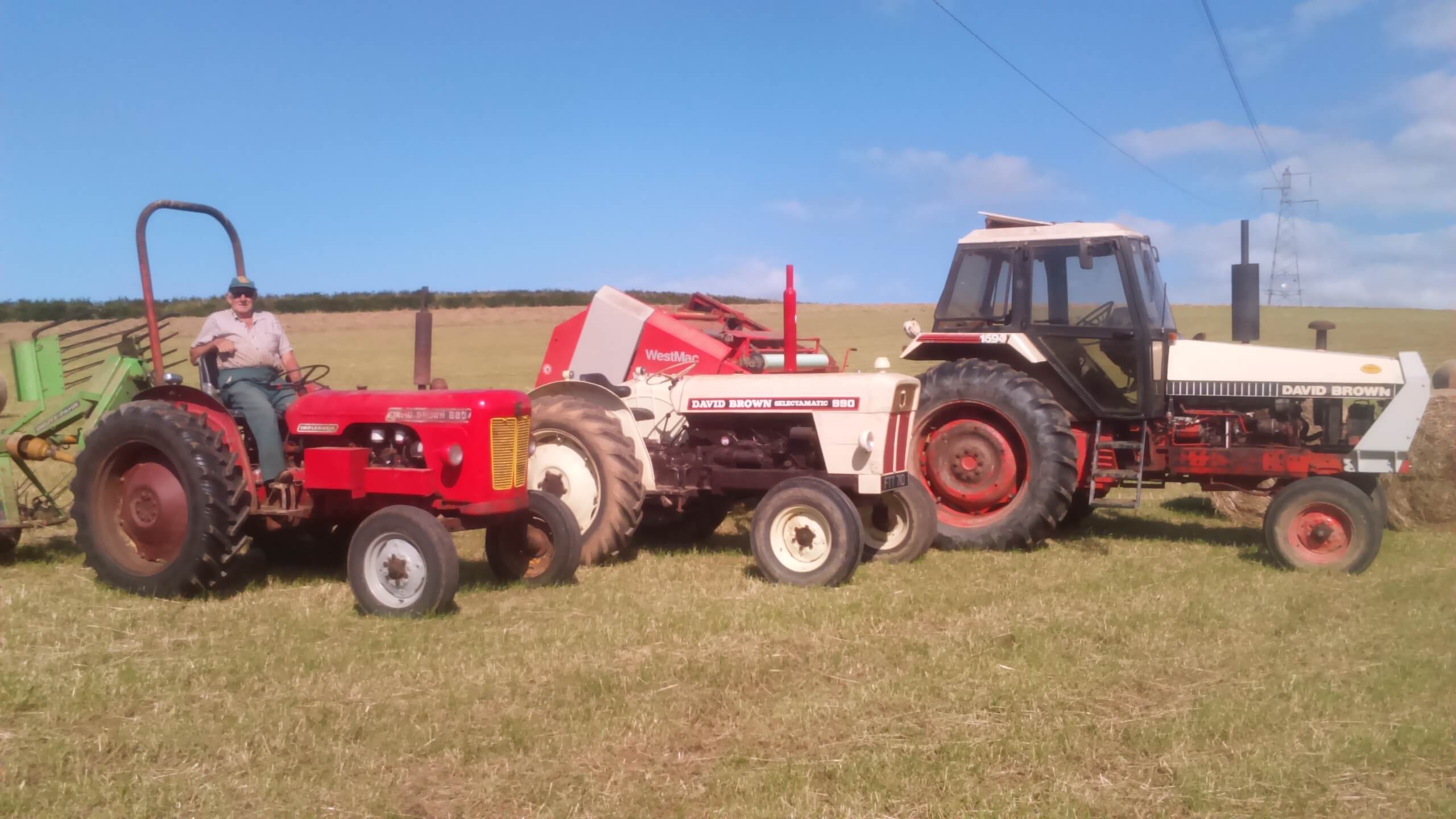
George back on the David Brown 880 during hay season in 2015.
Bidding farewell
As George entered his nineties, he understandably found working on the farm a taller order. It was around this time that I would join Dad and George out on the farm in the mornings.
We’re now into the fourth generation of the Stephens family at St Winnow. George has worked with all four generations over 73 years. This, to me, is a staggering feat. He was presented with a long service award many years ago at the Royal Cornwall Show whilst working for Henry. It’s unbelievable to think that he would go on to work on the farm much, much longer than this.
George is a humble, unassuming man who has shown incredible dedication and loyalty to our family. As a young child I can remember struggling to understand that he was not actually a relative of ours, such was how much he felt like a part of the family.
Since his wife Joan’s passing, George has lived alone. Now approaching his 92nd birthday, he was starting to find it a struggle to live alone. He has stepped off the farm after 73 years and, up until then, he has been a direct link to our ancestry, putting in the work that got us where we are today. Hearing him tell old stories of my grandfather and great-grandfather, both of whom I never knew for myself, has given me a unique connection to my forefathers that nobody else could provide. He is truly one of the very last of his generation, the people we call ‘the ones who worked’.
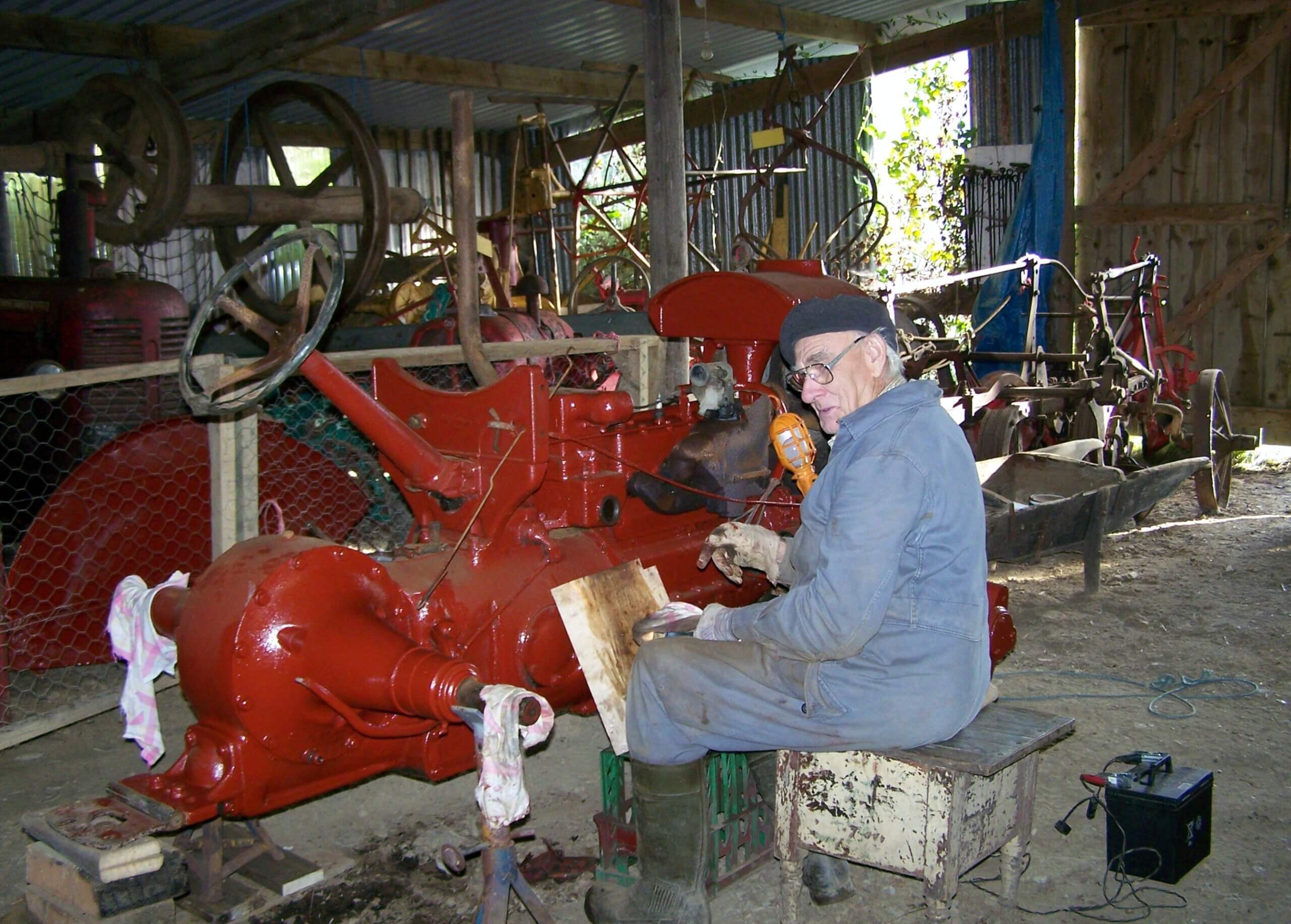
George helping restore the Standard Fordson N at the St Winnow Barton Farm Museum. The same model of tractor he would have first driven at Ethy Barton.